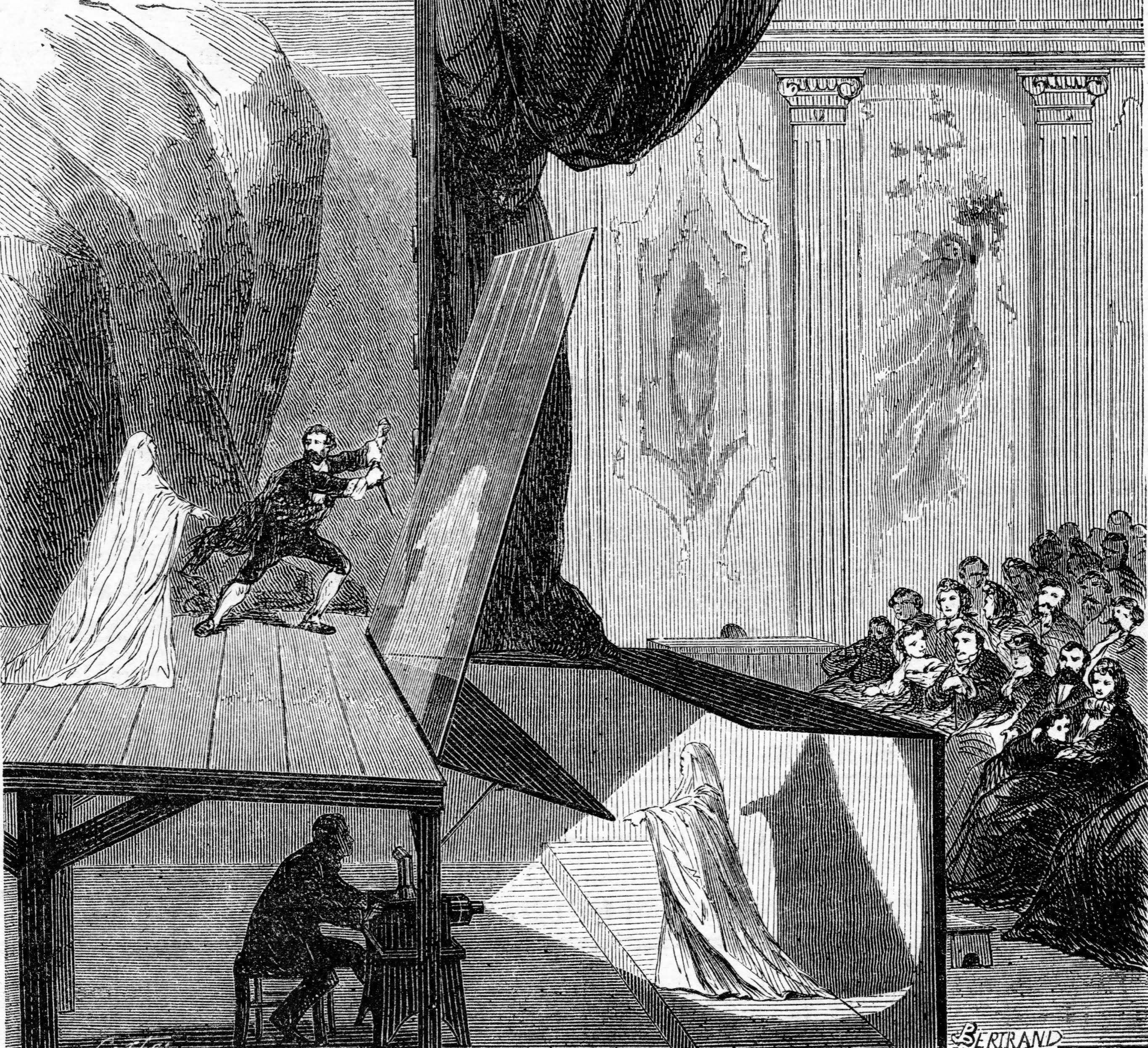05/06 — 07/06/2025
Il Fantasma di Pepper
Edoardo Lazzari

In 1890, John Henry Pepper published The True History of the Ghost: And All About Metempsychosis, a text halfway between illusionist narrative and scientific treatise, in which he describes the workings of his famous device, Pepper’s Ghost. This apparatus allows for the projection of “the reflected image of a luminous and hidden figure, made visible through a glass pane set at a 45-degree angle,” creating a ghostly apparition that appears without ever truly being present. The ghost, Pepper explains, “can appear and disappear at will, by varying the intensity of light on the hidden figure.”
This 19th-century technology, only seemingly obsolete, proves to be surprisingly current: performance as the mediation of an absence. Il Fantasma di Pepper, which lends its name to this series of performative actions, is not just a historical reference, but a theoretical and political figure — an allegory of presence as construction, and of visibility as a negotiation between the one who appears, the one who enables the appearance, and the one who observes. It is, we might say, an active threshold between apparatus and desire, between machine and affect.
The Pepper’s Ghost device, in its apparent optical simplicity, acts today as a methodological and poetic figure, a trait d’union between research practices that interrogate the phantasmatic through various modes of ephemeral emergence and the return of the repressed. In this sense, the project also aligns with a broader and growing interest within the field of performance art in the paradigms of hauntology—understood as a mode of thought and creation that welcomes the irruption of the unsaid, the echo of what is no longer, and the traces of unrealized futures.
In many of the works presented, the perceptual threshold shifts from the visible to the sonic, from the body to the trace, from the gesture to its echo. Some artists trace paths of haunting—in the sense given by Avery Gordon: “the way in which what has been oppressed, erased, or left unsaid returns in the form of a social ghost.” Others work on the transmission of implicit, residual memory, or on the emergence of sonic presences that infiltrate space as voices, interferences, evocations.
The project emerges from the fellowship period that Edoardo Lazzari carried out at Scuola Piccola Zattere over the past six months, during which a web of encounters, studies, and shared trajectories took shape. It is the result of direct dialogue with practices and theories that surfaced during this time, including the research of artist Tomaso De Luca and his exhibition Standards of Living (2024), which served as a significant point of resonance for many of the issues addressed here.
From this context arises a curatorial action aimed at bringing forth poetic affinities and formal resonances between local and non-local artists, supporting practices that — despite working through different languages — explore the threshold between the visible and the invisible, between gesture and memory. In doing so, it continues a line of work that seeks to value and amplify local artistic production not as a closed scene, but as an expanding field of relations.
The ghost — as image, symptom, and mode of perception — becomes a curatorial proposition: to open a space in which absence can take on a form, a duration, a possibility for relation.